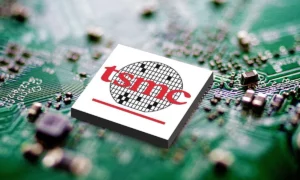Introduction
The University of Minnesota (U of M) is making a bold move to become a major player in the global semiconductor race. In a recent announcement, the university revealed a two-pronged strategy: appointing their first-ever Chief Semiconductor Officer and launching a dedicated website – CHIPS – to showcase their research and development efforts in this critical field.
The University of Minnesota is making a big push in the semiconductor industry:
- They appointed Steven Koester as their first ever Chief Semiconductor Officer.
- They launched a new website, chips.umn.edu, devoted to their research and education efforts in semiconductors and microelectronics.
Koester will lead the University’s efforts in this area, coordinating research and education initiatives and representing them in collaborations with industry, government, and other institutions [1]. This is part of a larger effort in Minnesota to boost the domestic semiconductor industry, including a recent $120 million grant to Bloomington-based Polar Semiconductor.
This is significant because semiconductors are essential components in many modern technologies, and the U.S. is looking to reduce its reliance on foreign manufacturers [1]. The University of Minnesota’s expertise in this area can play a key role in this effort.
This strategic move signifies the U of M’s commitment to fostering innovation and collaboration in the world of microelectronics.
The Growing Importance of Semiconductors
Semiconductors, the brains behind modern electronics, are the cornerstone of technological advancements. From smartphones and computers to medical devices and autonomous vehicles, these tiny chips power our daily lives.
However, the global demand for semiconductors continues to outpace supply, creating a critical bottleneck. This has spurred universities and research institutions worldwide to invest heavily in semiconductor research and development.
Read More: Celebrating 46 Years of the Intel 8086: The Birth of x86 Architecture – techovedas
U of M Takes the Lead
The U of M’s decision to appoint a dedicated Chief Semiconductor Officer demonstrates their serious commitment to this field.
This new leader will be responsible for coordinating university-wide research initiatives and investments in microelectronics.
They will also play a crucial role in forging partnerships with local companies, public agencies, and policymakers to strengthen Minnesota’s overall microelectronics industry.
The CHIPS Website: A Hub for Collaboration
The launch of the CHIPS website (chips.umn.edu) further underscores the U of M’s commitment to transparency and collaboration.
This online platform will serve as a central hub. Researchers, industry partners, and the public can access information about U of M’s cutting-edge microelectronics research here.
The website will showcase ongoing projects. It will highlight faculty expertise. It will also provide opportunities for potential collaborators. They can connect and explore joint ventures through the site.
Leadership for a Growing Industry
Steven Koester, the Russell J. Penrose Professor in Nanotechnology at the University, will spearhead research and educational initiatives in microelectronics.

He will also represent the university in collaborations with local companies, public agencies, and policymakers to advance Minnesota’s semiconductor industry. Koester’s role is pivotal in coordinating statewide efforts to leverage opportunities under the bipartisan U.S. CHIPS and Science Act.
“This is a great time for semiconductor manufacturing in Minnesota and the United States,“With the CHIPS and Science Act, we see a commitment from companies, academic institutions, and government officials to grow this industry and provide high-paying jobs.”
Koester.
Read More: Upto 22% : Top 5 Semiconductor Equipment Makers Sales Surge in Q1 2024 – techovedas
Federal and State Support
Highlighting this commitment, the Biden Administration recently awarded up to $120 million to Bloomington-based Polar Semiconductor.
This funding aims to double the company’s chip manufacturing output, with additional investments totaling $400 million from the company, the state, and other partners. These federal grants are part of a broader effort to strengthen the U.S. semiconductor supply chain.
Read More: Rapidus and IBM Collaborate for Chiplet Packaging for 2nm Process Node – techovedas
Cutting-Edge Research and Education
The University of Minnesota is a leader in semiconductor research, focusing on areas such as sensors, materials science, nanotechnology, spintronics, and 3D heterogeneous integration.
The university’s five campuses annually graduate thousands of students well-prepared for the science and engineering workforce.
“We want to lead cutting-edge efforts to grow this critical industry in Minnesota, The Chief Semiconductor Officer role underscores our commitment to be an active part of Minnesota’s semiconductor ecosystem. Steve will be instrumental in building partnerships and attracting new resources for research and our tech ecosystem.”
Shashank Priya, Vice President for Research and Innovation.
Read More: Expedera Opens Sixth Global R&D Center in Hyderabad, India: Implications – techovedas
Training and Workforce Development
In recognition of their efforts, Priya and College of Science and Engineering Dean Andrew Alleyne recently honored the Minnesota Nano Center and the Technological Leadership Institute. These entities have developed a new training program for 60 employees from companies like Polar Semiconductor, Honeywell, and Collins Aerospace. The course provides a comprehensive overview of integrated circuits and microdevices manufacturing. Additional support from the Minnesota Department of Employment and Economic Development is being sought to educate a new cohort next year, with interest from other technology companies.
Read More:IBM and Pasqal Forge Open-Source Path to Build Practical Quantum Supercomputers. – techovedas
Industry Collaboration
“We at Polar Semiconductor welcome the University’s appointment of Prof. Koester to this new leadership position,” said Polar President Surya Iyer.
“Our ongoing collaborations with the university address national security and commercial needs and attract new investments in Minnesota research and innovation.”
Read More: MIT Develops Breakthrough Technique for Training Multipurpose Robots – techovedas
Koester’s Background
Steven Koester, who joined the University of Minnesota in 2010, is a professor in the Department of Electrical and Computer Engineering and director of the Minnesota Nano Center.

His research focuses on novel electronic, photonic, spintronic, and sensing device concepts using emerging material systems. Before his tenure at the university, he spent over a dozen years as a research staff member at the IBM T. J. Watson Research Center.
Koester has authored over 300 technical publications, seven volumes, four book chapters, and holds 79 U.S. patents. He is a Fellow of both IEEE and Optica.
Follow us on Twitter: https://x.com/TechoVedas
Conclusion
The appointment of Steven Koester as the University of Minnesota’s first Chief Semiconductor Officer and the launch of the CHIPS website marks a significant step forward in the state’s efforts to become a leader in semiconductor manufacturing and research. With strong federal, state, and local support, the university is well-positioned to drive innovation, create high-paying jobs, and attract significant investments to Minnesota’s semiconductor industry.







